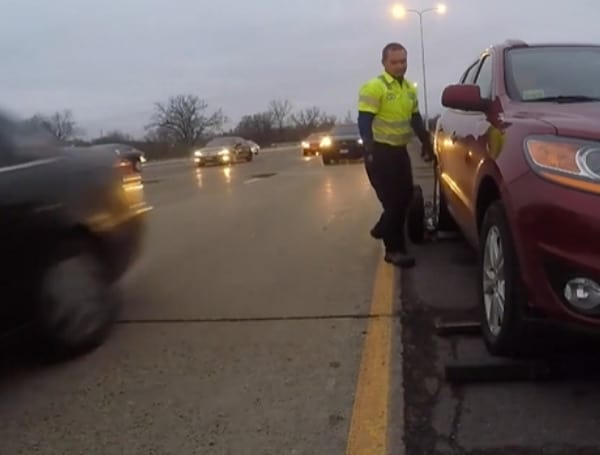AAA-The Auto Club Group continues its “Move Over for Me” campaign, by sharing a new study that examines the risk of being on the roadside and the effectiveness of various tools designed to alert approaching drivers.
AAA’s Research
The AAA Foundation for Traffic Safety conducted two field studies on busy roads to determine the effectiveness of various countermeasures like vehicle-mounted variable message signs (VMS), cones, flares, and more. The Foundation determined that VMS was very effective.
With VMS activated, drivers changed lanes and slowed down more than when the VMS was not operating. The odds of a vehicle moving over were 95% higher when the VMS was used.
In the news: Florida Department Of Education Requests Additional Info On Revised AP Study Course
Passenger vehicles were more responsive to the VMS than trucks or buses, although both were more likely to move over when VMS was active than when not.
Other Countermeasures have Merits
The Foundation examined cones, flares, and emergency flashing light patterns. Researchers found these led to significant lane shifts by drivers but were less effective at reducing speeds or increasing the distance to the passing vehicles that did not change lanes.
Recommendations
The results from these field studies suggest that using VMS, nighttime light patterns, cones, or flares can positively impact the behaviors of passing motorists under most circumstances. AAA strongly recommends service vehicles or fleets utilize these features, to protect these roadside heroes.
“AAA will be sharing this research with impacted industries and safety advocates in hopes that they will adopt these lifesaving countermeasures,” said Mark Jenkins, spokesman, AAA – The Auto Club Group. “At the same time, The Auto Club Group is working with Florida lawmakers to strengthen the existing ‘Move Over’ law to require drivers to move over for everyone, including disabled motorists.”
In the news: On Its 70th Birthday, Chevrolet Intros Electric AWD Corvette, 0-60 MPH In 2.5 Seconds
Advocating for Stronger Laws in Florida
Currently, all 50 states require drivers to move over for first responders and tow trucks. Yet only nine states have a law requiring drivers to move over for a disabled vehicle with their hazard lights on. AAA representatives in Florida are working with lawmakers in effort to introduce a bill in the 2023 legislative session which would do just that.
Passing would help prevent a tragic trend. Nationwide, nearly 350 people are struck and killed outside a disabled vehicle each year. Florida had 112 deaths between 2016 and 2020. The only states with more fatalities were California (281) and Texas (268).
“The roadside is equally dangerous for a driver with a flat tire, or the person called in to change it,” said Jenkins. “While we’re strong advocates for laws that protect tow truck drivers and first responders, AAA believes everyone should be afforded the same protection. Expanding the law would tell drivers to make it a habit to move over anytime they see someone on the roadside. That would save lives, plain and simple.”
Examining the Dangers for Tow Truck Drivers and First Responders
Helping stranded motorists on the side of the road should not be one of America’s most lethal jobs, but it is. On average, two emergency responders, including tow workers, are struck and killed every month by a driver who fails to obey the law by moving over to an adjacent lane and allowing the roadside rescuers the space to operate, according to the Bureau of Labor Statistics. Roadside crashes are notably deadly for tow workers. Government data shows that tow operators are killed at a rate of almost 43 deaths per 100,000 workers, compared to just three for all other industries.
As part of its research, the Foundation also surveyed tow workers, emergency responders, and road maintenance workers on their experiences with roadside jobs. Of those surveyed, 60% had experienced a near miss while working at the roadside, while an astonishing 15% had survived being hit by a passing vehicle.
“These heroes put their lives on the line every time they help someone on the roadside,” said Jenkins. “We ask that drivers minimize distractions and constantly pay attention to the road ahead of you. Doing so could save a life.”
Android Users, Click Here To Download The Free Press App And Never Miss A Story. Follow Us On Facebook Here Or Twitter Here. Signup for our free newsletter by clicking here.

